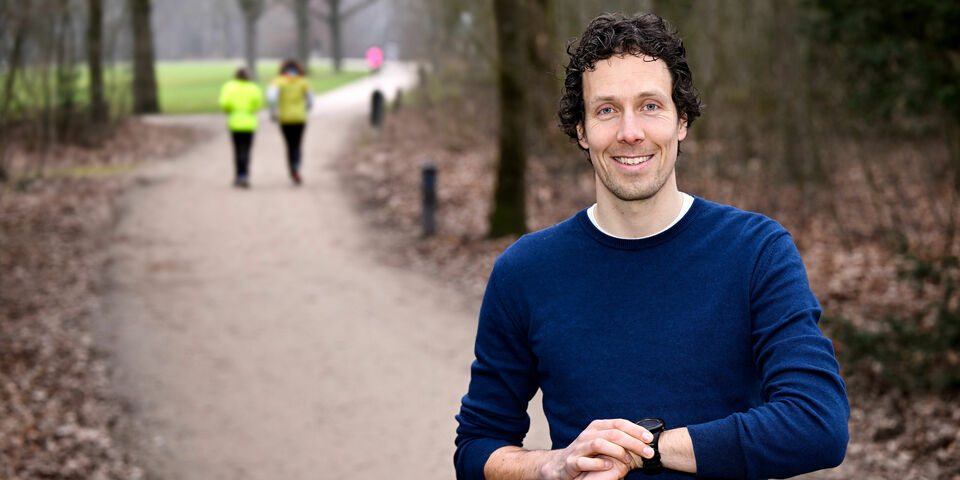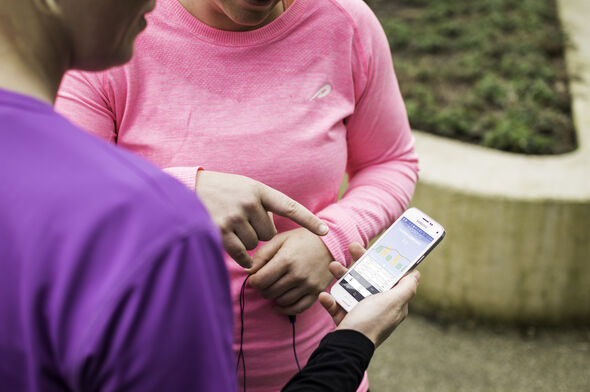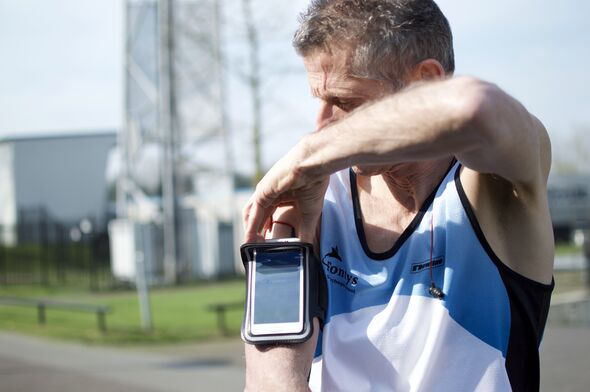Home Stretch | An app for the next step
Let’s be honest. Raise your hand if your new year’s resolution was to start running, but you eventually ended up as a couch potato. Raise your hand if you bought running shoes during the lockdown but in the end, left them to catch dust somewhere in the back of your closet. TU/e-PhD candidate and Fontys School of Sports Studies researcher Mark Janssen investigated the novice runner and designed an app that does make you stay on track. Today, he will defend his dissertation at the Department of Industrial Design.
Running is very popular. Not only during the Corona lockdowns when exercising together wasn’t possible and the gyms weren't open, but at the start of each year, many people put on their running shoes for a run in the park. You don't need much equipment, it doesn't cost much, it is easy to fit into your schedule, and you can also do it on your own. Simply said: running has a low threshold. But that’s where the danger lies, says Mark Janssen. Janssen, who has received a PhD grant for teachers, combined his PhD research at the Department of Industrial Design with his job as a teacher-researcher at Fontys School of Sports Studies and investigated the novice recreational runner. "You think: I just put on my running shoes, and I’ll be gone. Half an hour, an hour? Why wouldn’t I be able to do that? And that is not a smart line of reasoning. Because with every step you take, your body needs to absorb three to four times your body weight. Your muscles, tendons, and bones need to gradually adjust to this, especially if you’ve put on some weight during the holidays. If you go too fast at the start, you might strain a muscle and end up with an injury.”
That is why running is the sport with by far the most injuries. Janssen explains that one of the reasons this happens is the lack of proper guidance. “For years, running groups and clubs have been drawing fewer and fewer members. All the while a trainer can be very important. Especially for a novice runner, they can keep an eye on the injuries and design a personalized running schedule. Many people just copy schedules from the internet. But those are the same for everyone, no matter your goal, weight, or condition.”
It would be a utopia if every runner had a trainer, Janssen agrees. To support the so-called ‘unorganized, unchecked’ runner, Janssen looked at what technology could help the novice runner through the early days and reduce the risk of injuries. “We started with an investigation into the motivation of the runner. They all participated in a running event, ranging from 5K to a marathon. The novice runners usually have a clear goal in mind, but they are more likely to cite personal reasons as why they would stop: no time, not fun, suffering from ailments. The advanced runner has embraced the sport more and can be roughly divided into two groups: the social competitive runner and the individual competitive runner - more often male, slightly older, runs with sports watch and sports apparel from well-known brands. Whereas the social competitive runner likes to run in a running group and seeks out competition with other runners, the individual competitive runner is primarily focused on their own performance and prefers to train alone. Both groups know their bodies well and are less likely to get overtrained. They indicate that they mostly run to experience the relaxing ‘runners high’ and will not stop anytime soon.” It is a special study because never before has such a large group of about 20,000 runners been studied in detail. And this alone has already led to four scientific articles.
So many runners, but therefore also so many different types of runners. Taking that into consideration, it might be smart to adopt assistive technology to the running type, Janssen emphasizes. "So, not a watch for everyone. Fun for the advanced runner or the athlete, but a novice runner can't do anything with those fancy features that generate an overload of data. Before we get to there, we need a good foundation or guidance first.”
The same goes for running apps. They are mainly used by novice runners, and it is precisely this group that has a high drop-out rate due to injury or loss of motivation. Janssen compared twenty-five running apps and found hardly any offerings of personalized training, although there was some room for nuance. That is why he developed a decision tool which, based on a few questions - what is your goal, what do you want to achieve, what do you want to measure - helps you find a suitable app in the sea of running apps. Nevertheless, the lack of a personalized app kept nagging, so Janssen set to work with a multidisciplinary team himself. “I was keen to use the knowledge from my background as a researcher of human movement about training principles and training responsibly. We have designed an app for the novice, inexperienced runner that will get to know you during your first run and then be able to calculate what your new workout should be based on your previous run. The Inspirun E-coach considers your heartbeat, speed, and mood. Actually, a kind of automated trainer" Janssen laughs.
Test runners are positive about the Inspirun E-coach app and note that it definitely helps them learn how they should train, oftentimes differently from what they believed themselves. There is no commercial party to further market the app (yet), but Janssen has published several papers on the algorithm of the running tool so that it is available for everyone. Janssen - who is not a runner himself but an avid cyclist - has kept an eye on technological developments since then. And whether it is a coincidence or not, the first apps with personalized training are slowly making their entrance. At Fontys School of Sports Studies, the teacher-researcher now wants to expand his research to other sports such as cycling and walking; for runners, he will study integration using new technology. "Sensors on your skin to measure your breathing or soles in your shoes, we can measure more and more. But most importantly, we want to get more and more people moving, without the distracting mountain of data and injuries.
Do you want to know more about the Inspirun E-coach? In the tv show Zorg voor Morgen - Sport en beweging, presenter Manuel Vanderbos tests the training app.
Want to start running? This is how you keep it up!
Build it up slowly. Many novice runners want to go too far too soon. Get to know your body and schedule enough days off in between. So, don't go at it every day.
Make sure you have a tangible goal. It could be a running event or just being able to fit in those jeans again.
Find a schedule that suits you and your goal. A running trainer is there to help you through the first obstacles and teach you how to train. Do you prefer an app? Use the decision tool to decide which app suits you the best; it might not always be the number 1 app in the app store.




Discussion